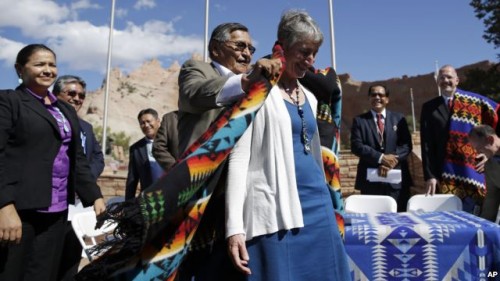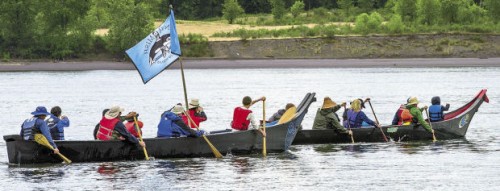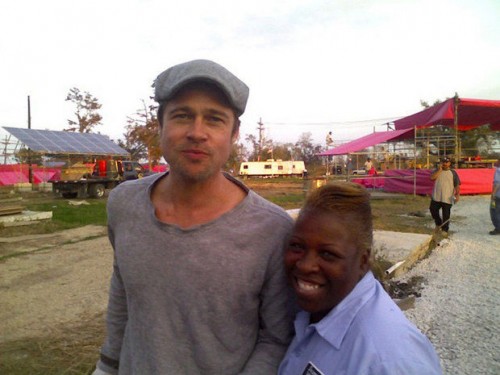By SEAN MURPHY, Associated Press
OKLAHOMA CITY — While state leaders remain steadfastly opposed to a Medicaid expansion offered under the federal health care law, some of Oklahoma’s 39 federally recognized Native American tribes are exploring opportunities for a federal waiver that could mean health insurance for about 40,000 low-income uninsured tribal members.
Oklahoma Health Care Authority CEO Nico Gomez said talks are underway about seeking an expansion of the state’s Insure Oklahoma program to include some of the estimated 80,000 Native Americans in Oklahoma without health insurance. Gomez estimated as many as half of those tribal citizens could qualify for the program, depending on where the income threshold is set.
Although still conceptual, Gomez said the idea would involve the tribal citizen paying a portion of the health insurance premium, the tribe paying a portion, and the federal government paying the largest part.
“We’re not looking at tapping into any state revenue, not now or in the future,” Gomez said. “Frankly, if it required any state revenue, I’m not sure we’d even be having this conversation.”
Gomez said the proposal was initially discussed last week with tribal representatives, and that he plans to brief members of the Health Care Authority’s governing board during its regular meeting on Thursday. Some of the state’s largest tribes, including the Chickasaw and Cherokee nations, are involved in discussions, Gomez said.
Insure Oklahoma provides health coverage to about 18,000 low-income Oklahoma residents, mostly through a program in which the cost of premiums are shared by the state (60 percent), the employer (25 percent) and the employee (15 percent). The state portion of the program is funded through a tax on tobacco sales, but a federal waiver that allows the program to operate has only been approved through the end of the year.
Gomez said expanding the program to include a tribal option could help ensure the federal waiver continues.
Billy James, a 31-year-old University of Oklahoma student and a citizen of the Chickasaw Nation, said he wants to have health insurance but can’t afford the premiums.
“I’m trying to hold out as long as I can,” said James, who is finishing his master’s degree and currently unemployed. “I’m kind of scared about not having insurance, but I’ve got to tough it out a little while longer.”
A spokesman for Gov. Mary Fallin, a staunch supporter of the Insure Oklahoma program, said the governor is excited about the potential of a tribal expansion.
“We’re particularly excited about the fact that it would not cost the state any tax dollars, which is important as we deal with our current shortfall,” Fallin spokesman Alex Weintz said.
Currently, there are about 130,000 Native Americans in the state’s Medicaid program, which is about 16 percent of the overall Medicaid population in Oklahoma.
















